Graphs of Cubic Polynomials (Cambridge (CIE) IGCSE Additional Maths) : Revision Note
Graphs of Cubic Polynomials
What is a cubic polynomial?
A cubic polynomial is a function of the form
and
are constants
it is a polynomial of degree 3
so
and/or
could be zero
To sketch the graph of a cubic polynomial it will need to be in factorised form
e.g.
is the factorised form of
What does the graph of a cubic polynomial look like?
In general the graph of a cubic polynomial will take one of the four forms
All are smooth curves that take some practice to sketch!
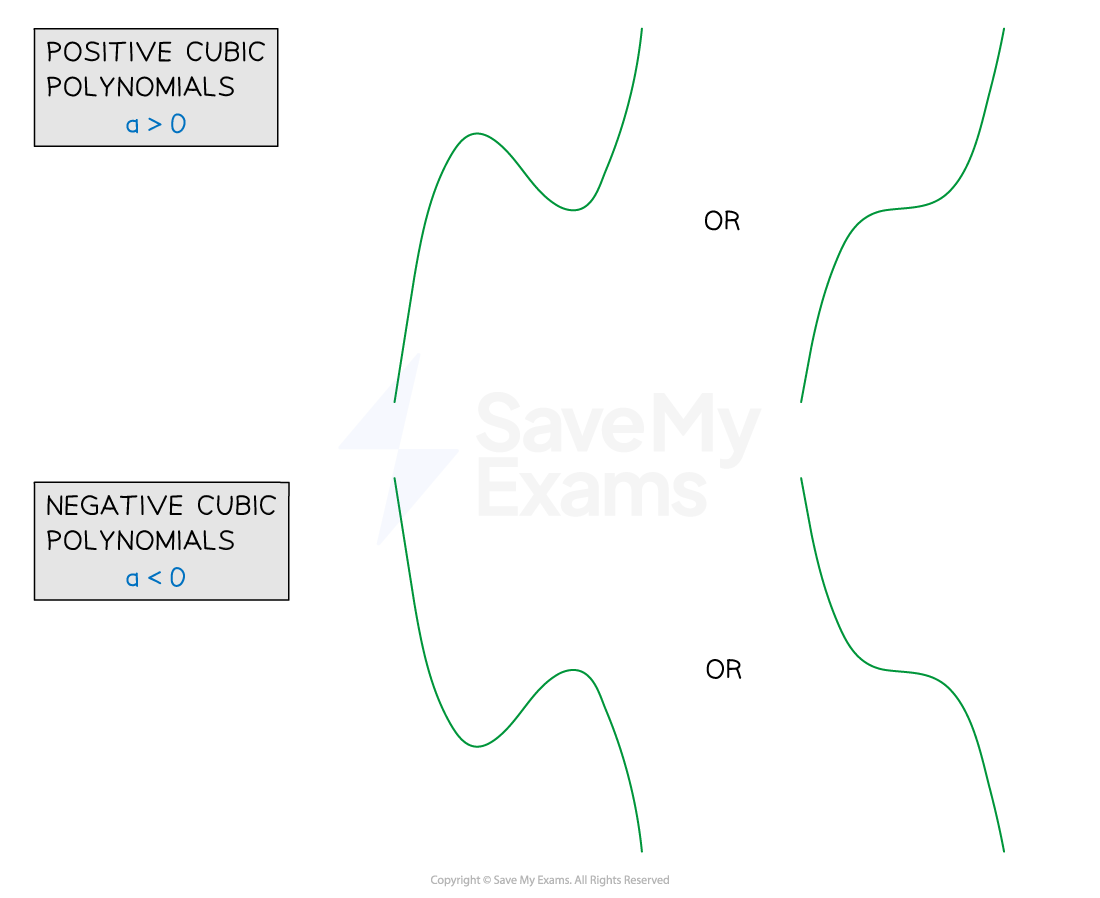
The exact form a particular cubic polynomial will depend on
The number (and value) of roots (
-axis intercepts) of the cubic polynomial
The
-axis intercept
The sign of the coefficient of the
term (
)
If
the graph is a positive cubic ('starts' in the third quadrant, 'ends' in the first)
If
the graph is a negative cubic ('starts' in the second quadrant, 'ends' in the fourth)
Turning points

How do I sketch the graph of a cubic polynomial?
STEP 1 Find the -axis intercept by setting
STEP 2 Find the -axis intercepts (roots) by setting
(Any repeated roots will mean the graph touches - rather than crosses - the
-axis)
STEP 3 Consider the shape of the graph - is it a positive cubic or a negative cubic? Where does the graph 'start' and 'end'?
STEP 4 Consider where any turning points should go
STEP 5 Sketch the graph with a smooth curve, labelling points where the graph intercepts the and
axes
Examiner Tips and Tricks
In the exam, a cubic polynomial that requires sketching will be given in factorised form
i.e. as the product of three linear factors
a factor could be repeated
Build your sketch up as you work through each step to gradually build a mental picture of it
If you need to redraw the graph for your final answer, that's fine!
Worked Example
Sketch the graph of .
STEP 1 - -axis intercept
STEP 2 - -axis intercepts
(repeated)
STEP 3 - shape, 'start'/'end'
so it is a positive cubic
is a repeated root so the graph will touch the
-axis at this point
STEP 4 - turning points
One turning point (minimum) will need to be where the curve touches the -axis The other (maximum) will need to be between
and
STEP 5 - smooth curve with labelled intercepts
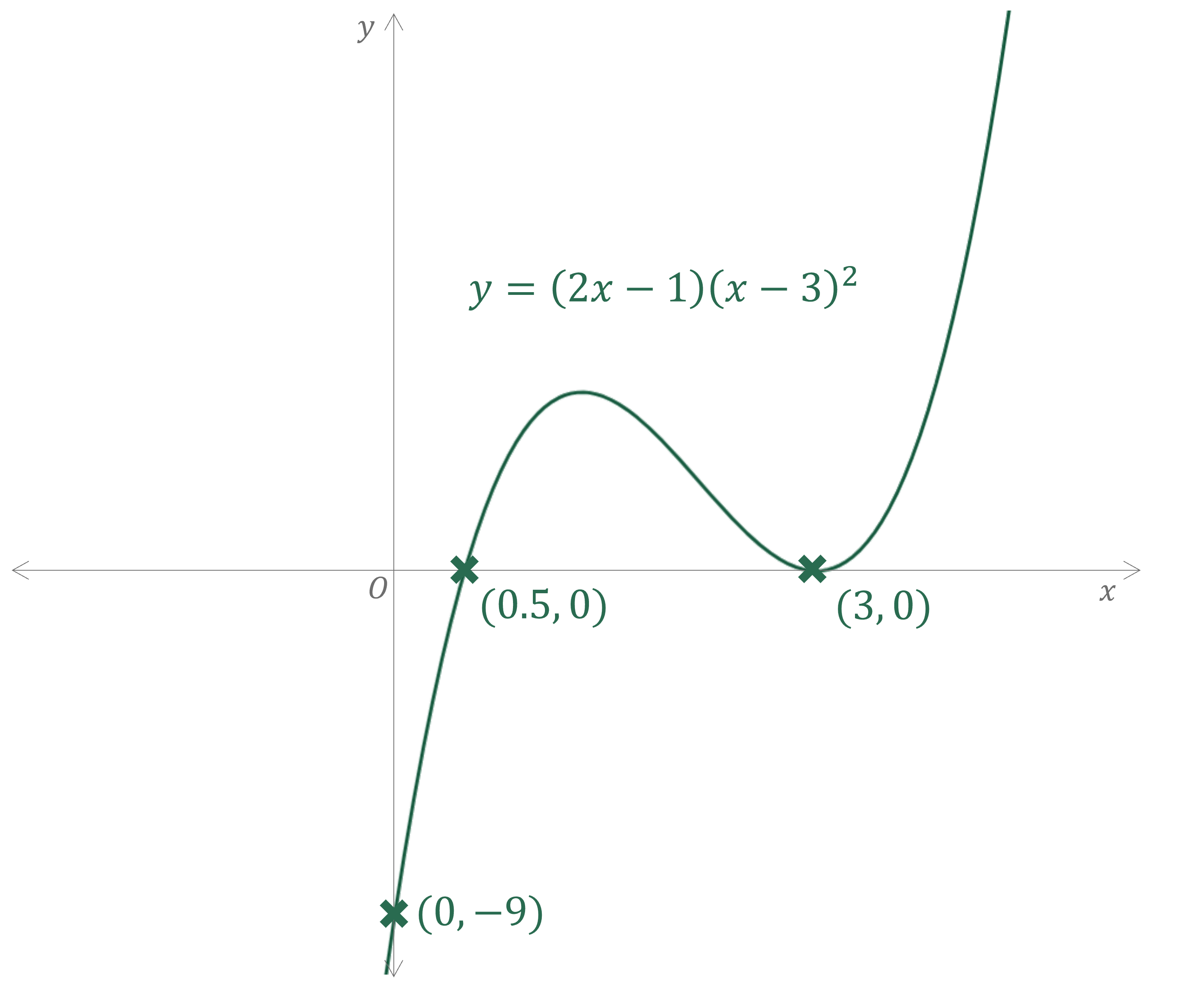
Modulus Cubic Graphs
What is a modulus cubic graph?
A (factorised) cubic polynomial is of the from
The graph of
must cross the
-axis at least once
therefore
must take both positive and negative values
The modulus cubic graph,
will mean all values of
are positive
Any negative values become their positive equivalents
e.g. If
then
, but
A modulus cubic graph will not have any negative values
the graph will not cross the
-axis
the graph will touch the
-axis (at least once)
How do I sketch a modulus cubic graph?
Sketch the graph of the (original) cubic polynomial,
Any parts of this graph that are below the
-axis should be reflected in the
-axis to sketch the graph of
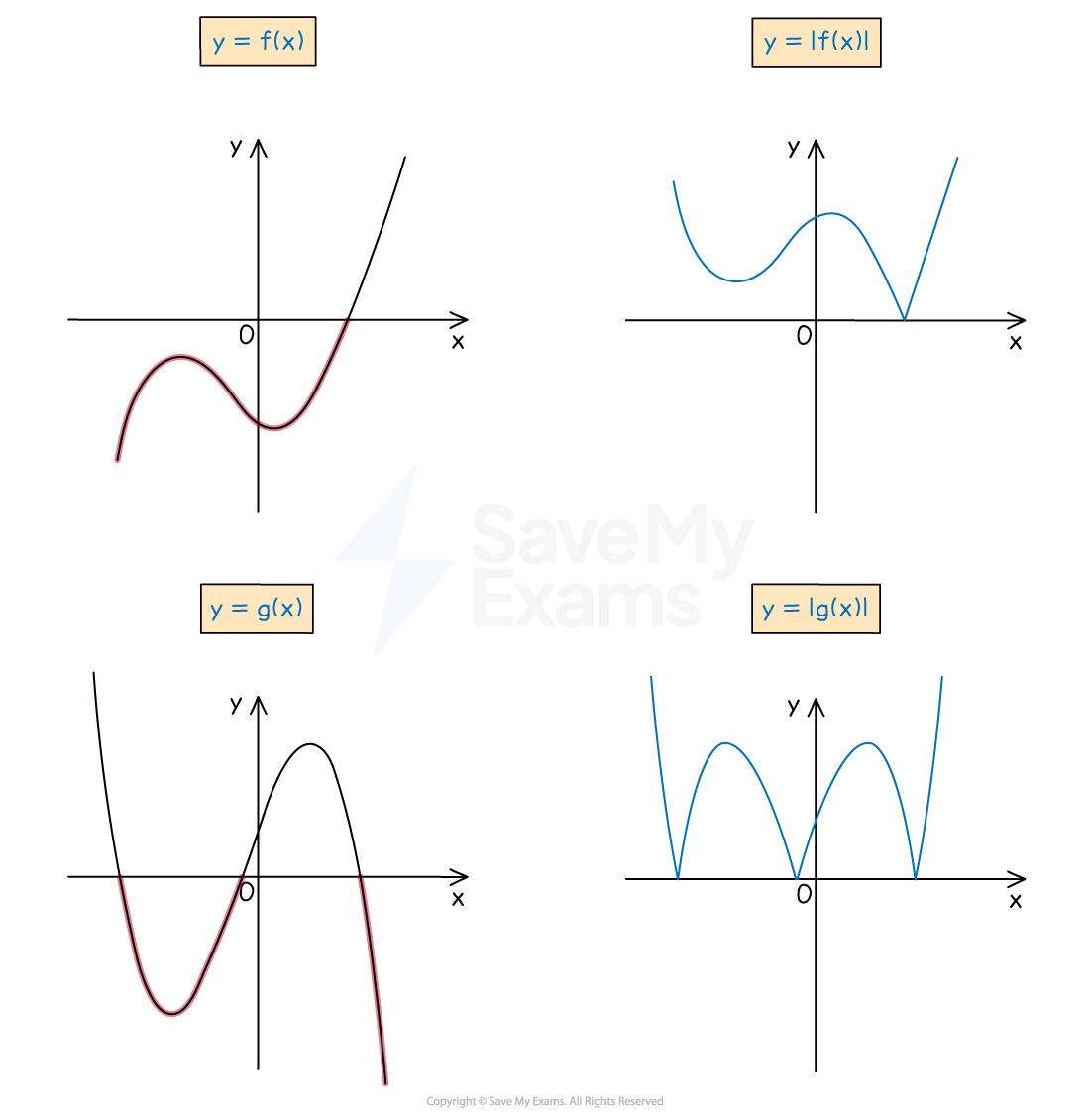
The points at which a modulus graph touches the
-axis are the same as the points at which the original graph intercepts the
-axis (i.e. the roots of
)
Label these points, and the
-axis intercept, on a sketch
Notice that the points at which a modulus graph touches the
-axis are not smooth
they are 'pointy' (V-shaped)
turning points are smooth (U-shaped)
How do I find a cubic function from its modulus graph?
To deduce a cubic expression from its modulus graph consider
whether the (original) expression could be a positive or negative cubic
a positive cubic 'starts' in the third quadrant and 'ends' in the first
a negative cubic 'starts' in the second quadrant and 'ends' in the fourth
a negative cubic can have a "-" at the start of its expression
the
-axis intercepts - the roots
for the roots
and
, write the factors
the
-axis intercept - to deduce the expression in the form
lots of cubic functions have the same roots but have different coefficients
the
-axis intercept should be the product
may often, but not always, be 1
Examiner Tips and Tricks
Sketching the (original) graph of
first is often helpful rather than trying to sketch the modulus graph from scratch
If asked to find a cubic function from a given graph
there may be more than one possibility
consider which parts of the graph may have been reflected in the
-axis
could it be either a positive or negative cubic polynomial?
the factorised form is usually sufficient (unless a question says otherwise)
Worked Example
The diagram below shows the graph of where
is a positive cubic polynomial.
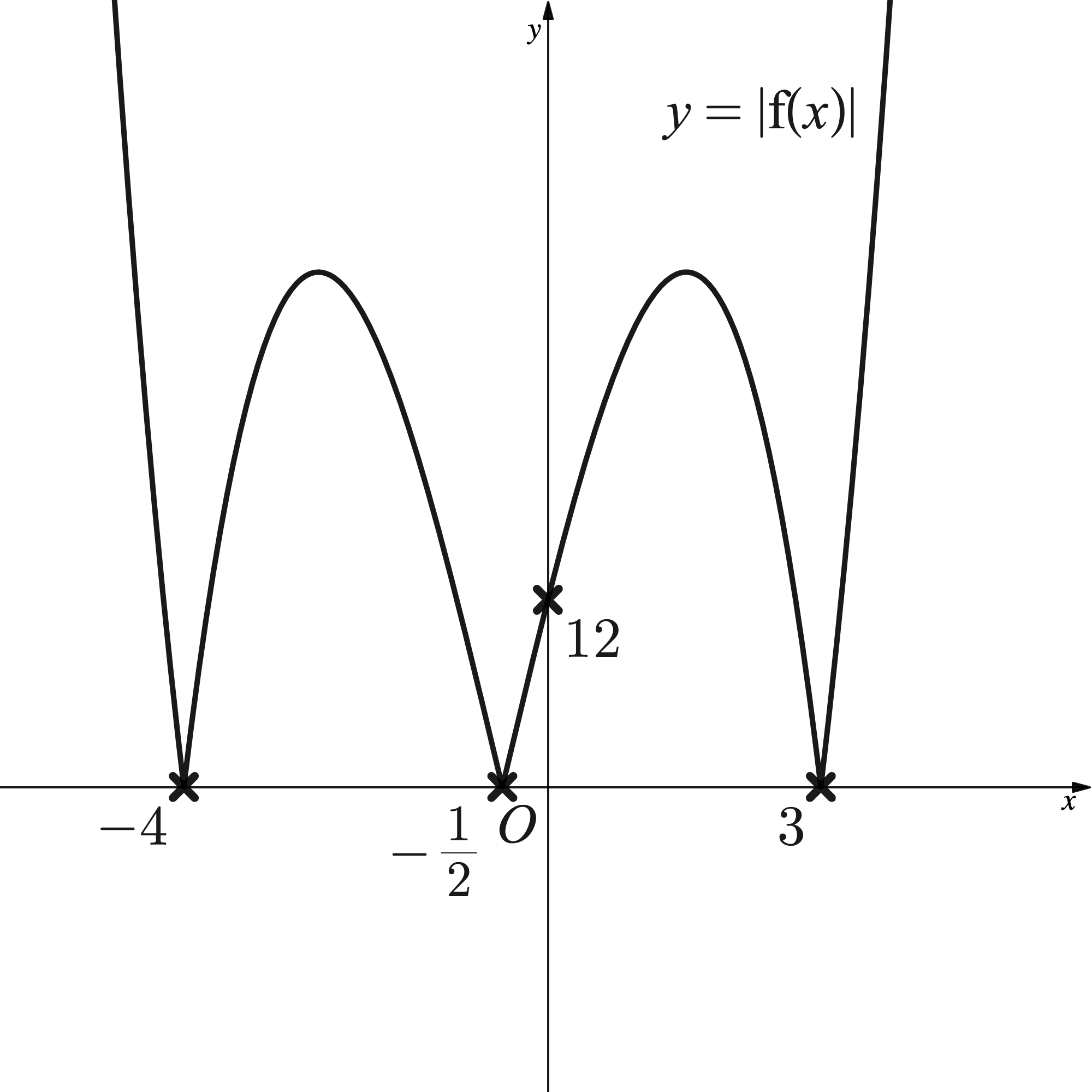
Deduce an expression for leaving your answer in factorised form, with each factor having integer coefficients.
is a positive cubic polynomial so the graph should 'start' in the third quadrant and 'end' in the first. A quick sketch (without labels) can help.
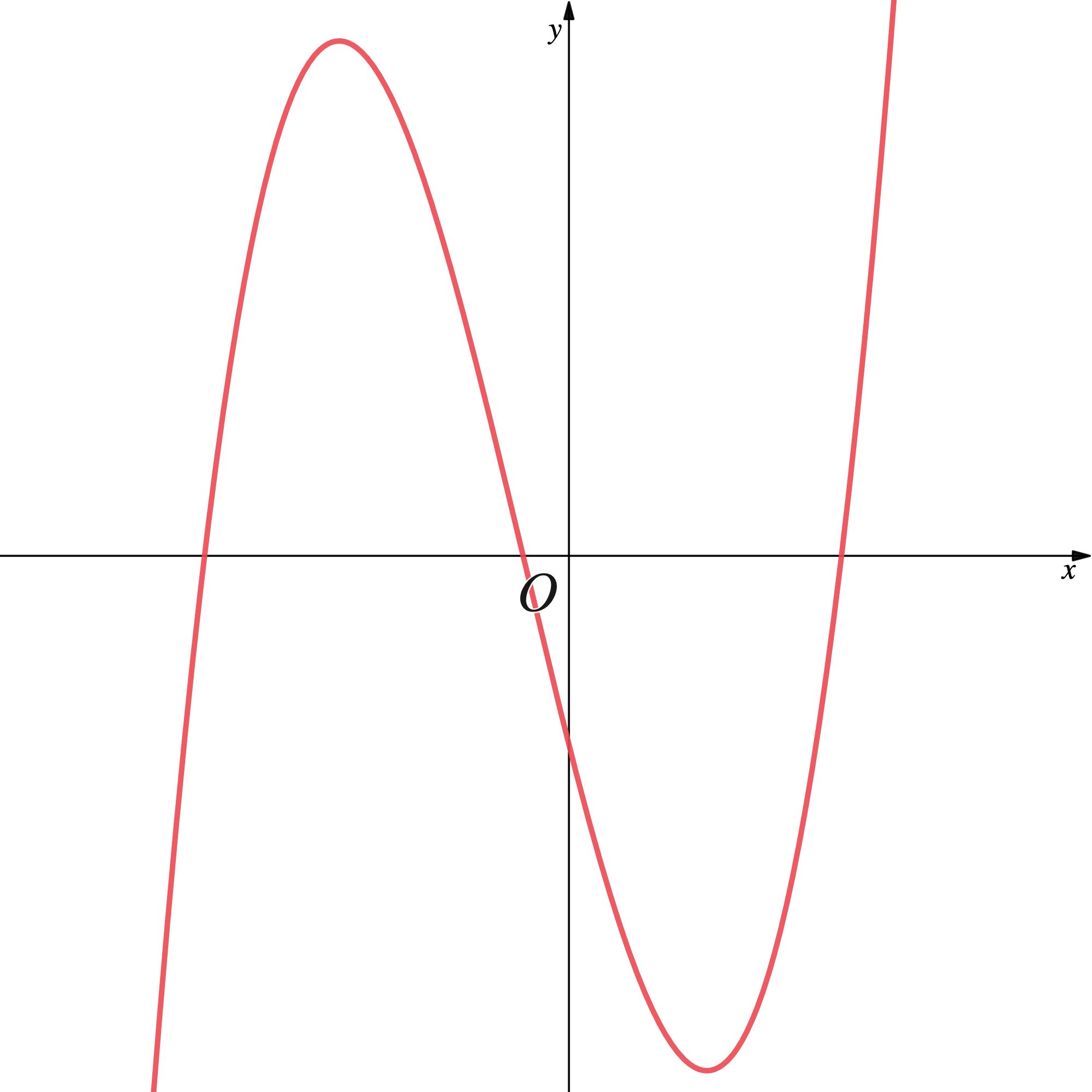
The -axis intercepts indicate the roots.
The expression for is of the form
. Use the
-axis intercept to deduce the value of
. From the sketch of
the
-axis intercept is -12 (not 12).
The final answer requires each factor to have integer coefficients so multiply 2 into and write down
.
Solving Cubic Inequalities Graphically
What is a cubic inequality?
A cubic function is of the form
where
and
are constants
A cubic inequality can be any of the following
An inequality may need rearranging into one of these forms first before solving
Furthermore, solving cubic equations graphically is easiest when the expression has been factorised
e.g. for a cubic with three (real) roots this would be
where
and
are the roots
How do I solve a cubic inequality graphically?
STEP 1 If need be, rearrange the inequality so that one side of the inequality is zero This should leave a cubic polynomial on the other side Factorise the cubic polynomial if required e.g.
STEP 2 Sketch the graph of the cubic polynomial The -axis intercepts (roots) are crucial to finding the solution but the
-axis intercept is not needed e.g.

STEP 3
Identify the part(s) of the graph that satisfy the inequality
Highlighting this on the sketch will help
Consider whether you need to include (≤, ≥) or exclude (<, >) the roots e.g.
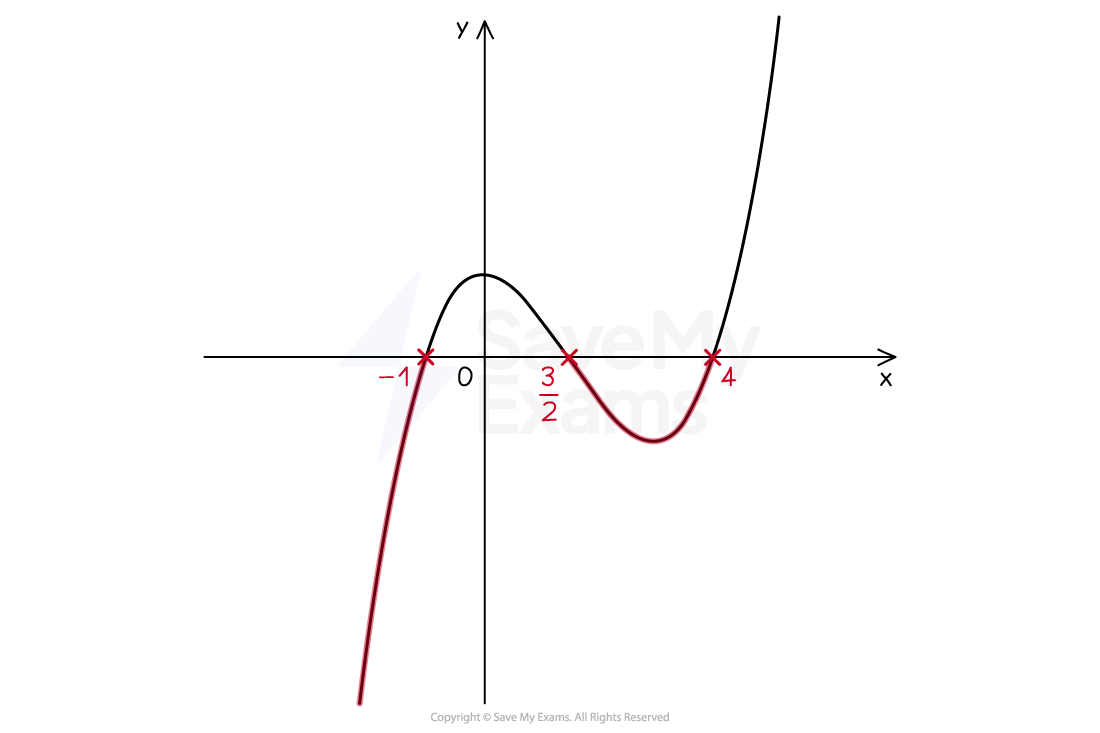
STEP 4
Write down the solutions to the inequality
e.g.
Worked Example
a) Sketch the graph of where
.
This is a positive cubic polynomial with roots and
is a repeated root so the graph will touch the
-axis at this point

a) Hence solve the inequality .
STEP 1 - the cubic polynomial is already in factorised form
STEP 2 - the graph has been sketched in part (a)
STEP 3 - Highlight the graph to show the parts of the graph which lie above zero
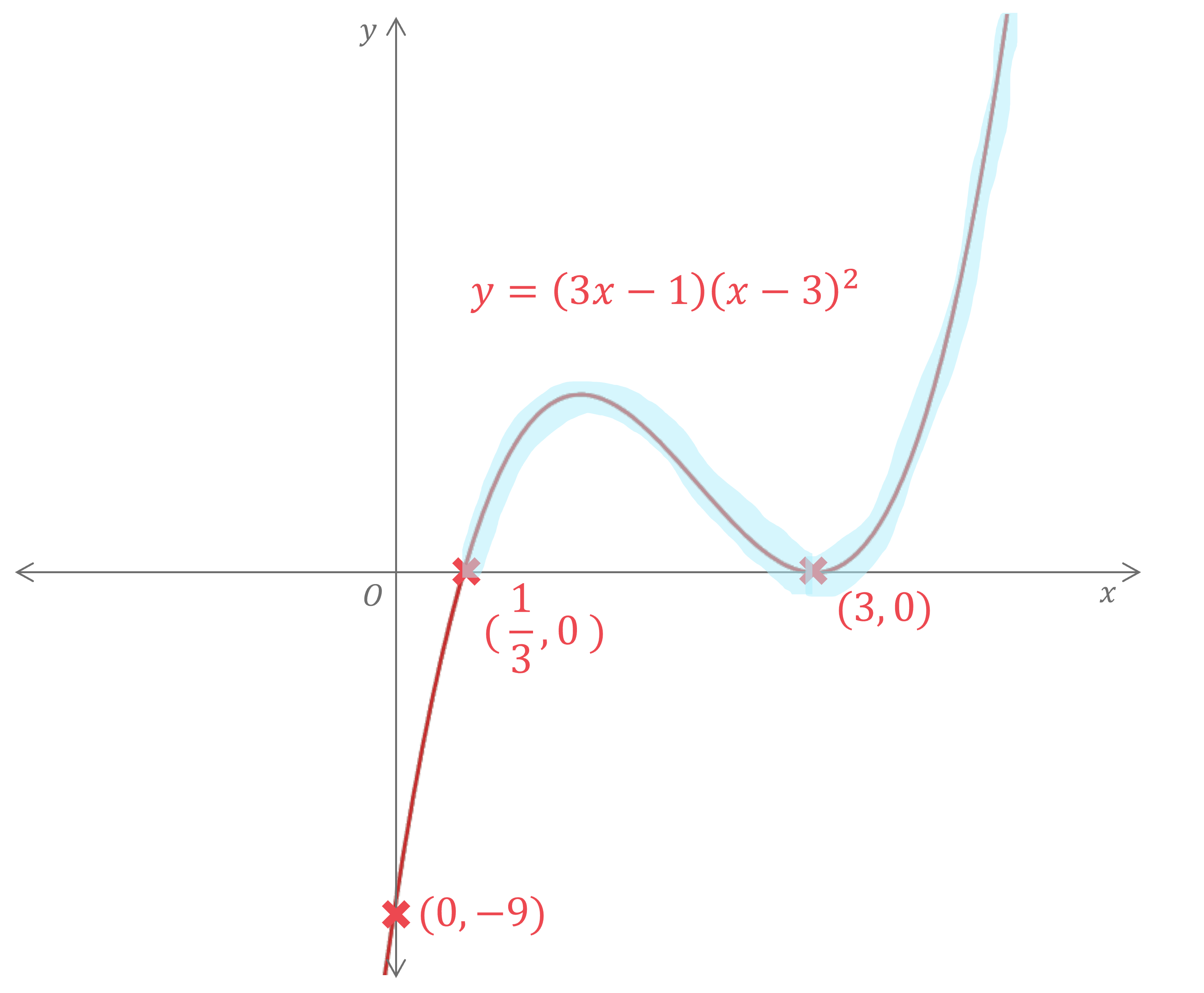
STEP 4 - Write the solution mathematically. Remember that in this case it is a strict inequality, so it cannot be equal to 3 or

You've read 0 of your 5 free revision notes this week
Sign up now. It’s free!
Did this page help you?
